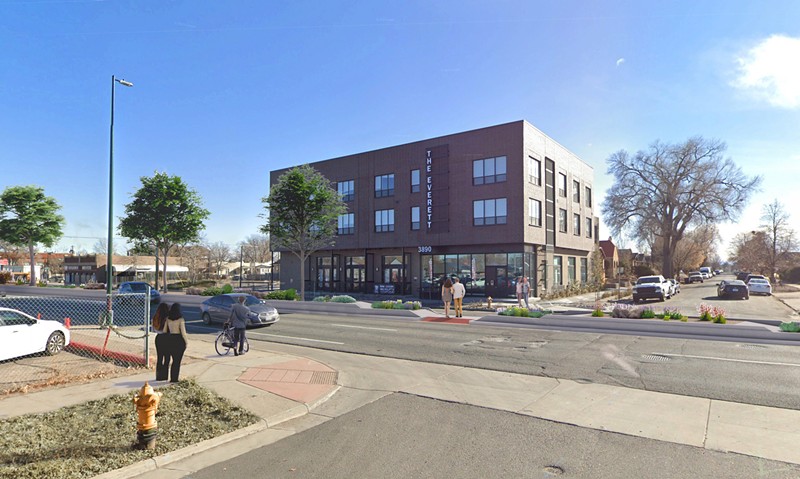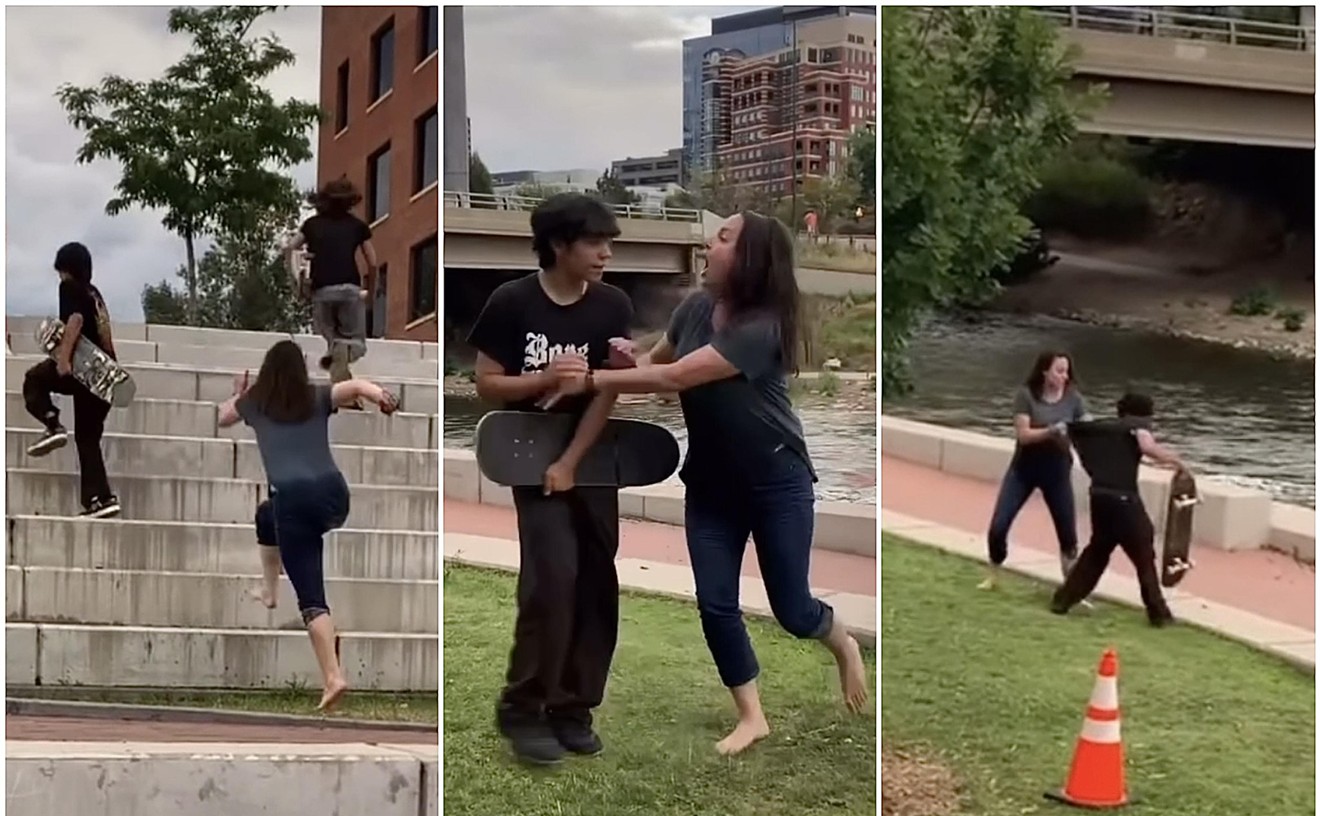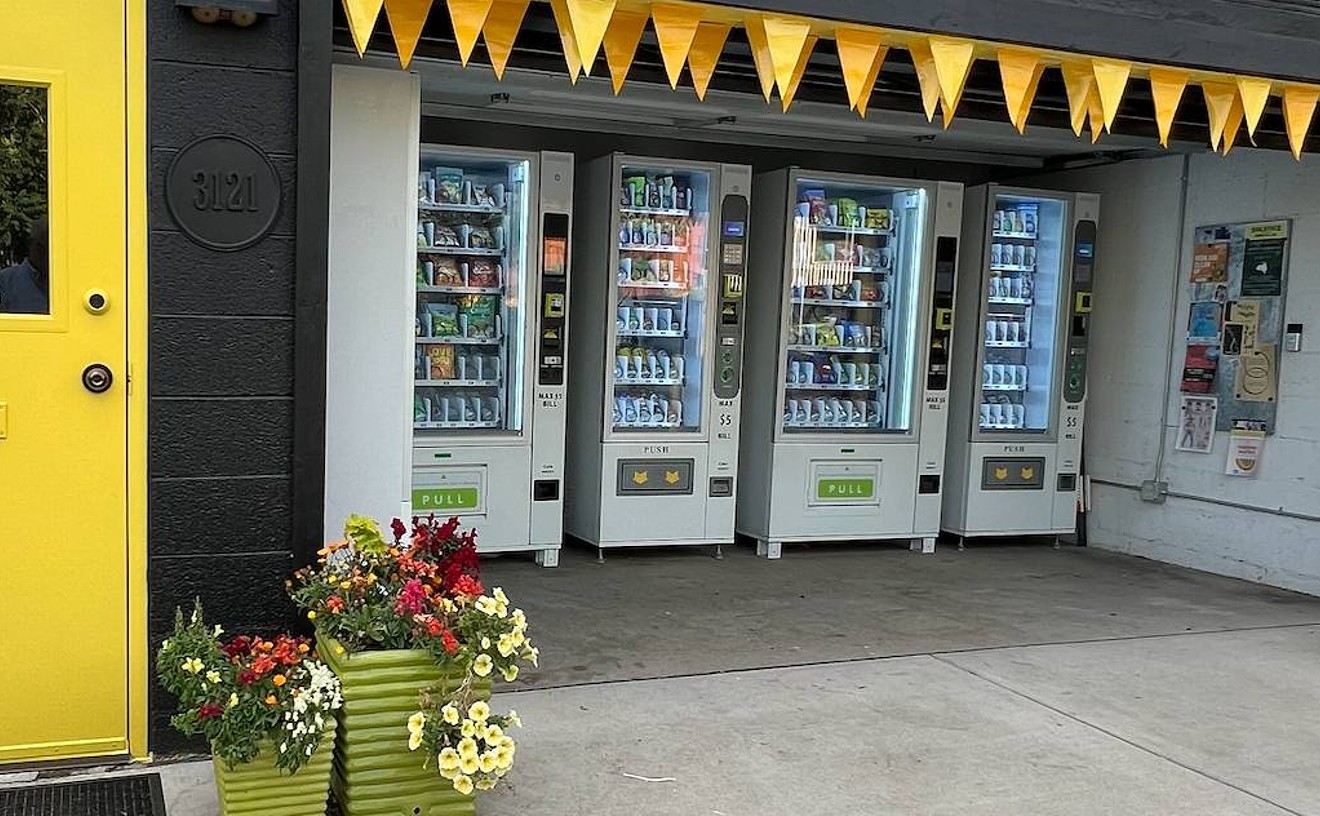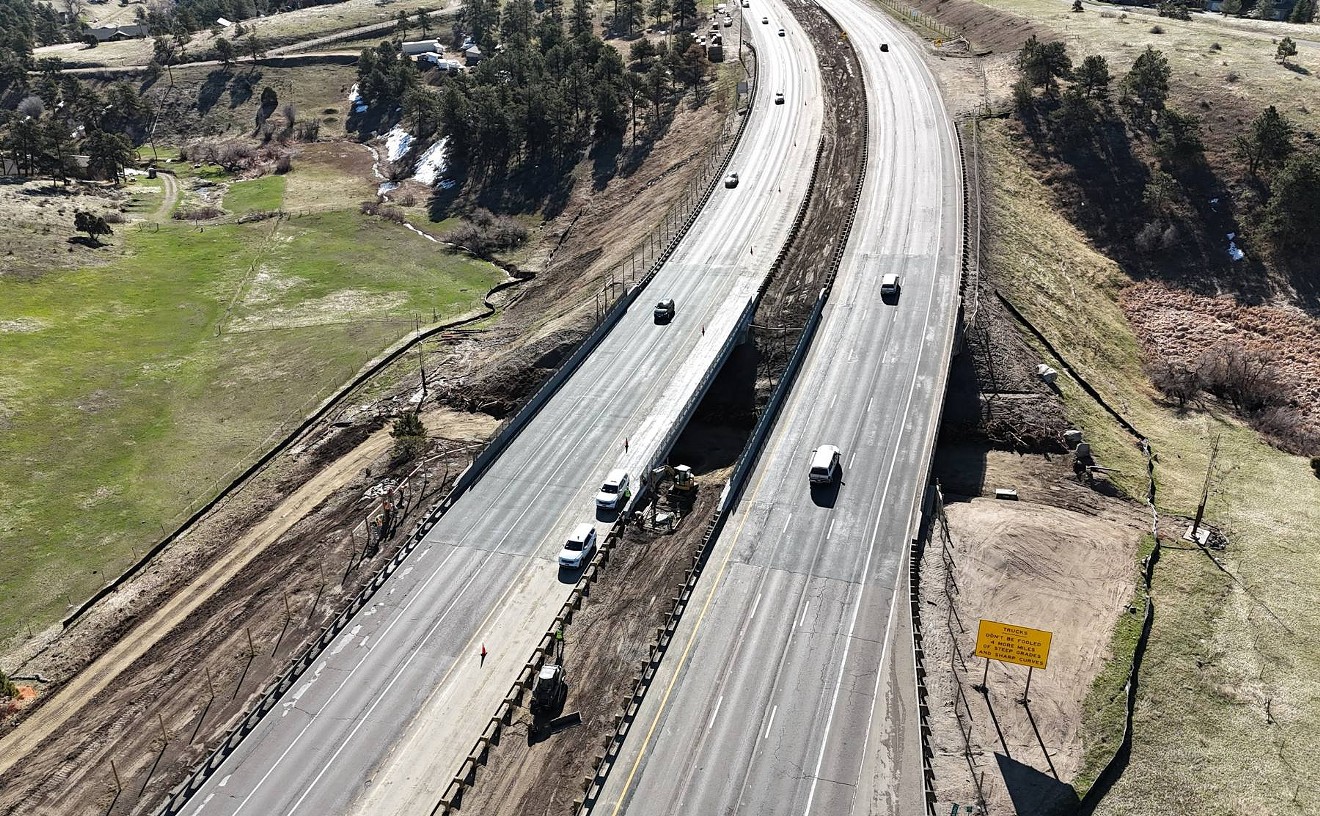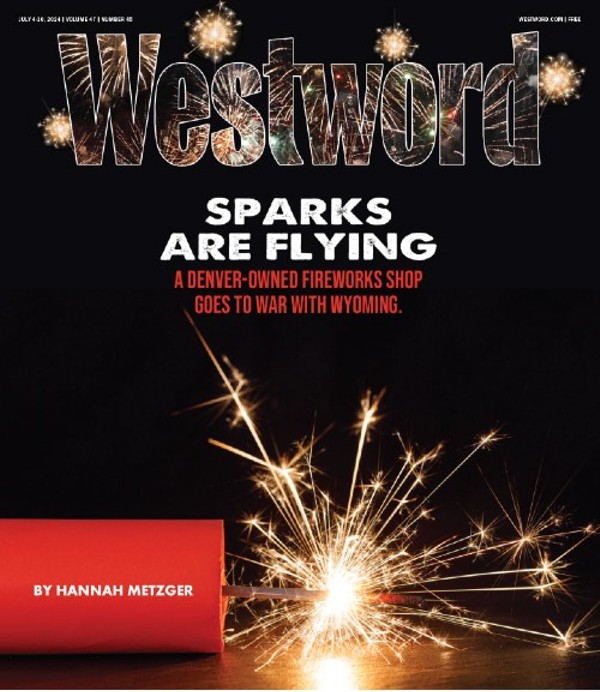The West Colfax Business Improvement District had been working on the concept since 2015, when it hosted a “Re-imagine West Colfax” event when it brought greenery to the streets and drew extra pedestrian crossings to show Colfax's potential if it weren't just seven lanes of asphalt.
“I can't tell you how important I think it is for West Colfax and the people who live there, the people who are vulnerable who live along the street," says Dan Shah, executive director of the BID. "They're the people who shop there, have businesses they operate there.”
West Colfax is part of Denver’s high-injury network, according to the city’s Vision Zero Action Plan, which lays out a strategy to eliminate fatalities and serious injuries from vehicular accidents by 2030. So far in 2024, there have already been two crashes that led to serious bodily injuries along the stretch of Colfax targeted for this project.
The plan is to install eight median refuges for pedestrians to “decrease pedestrian crossing distances, provide people on foot with a safe place to stand when crossing the street, and reduce left turns and conflict points between people walking and driving,” according to Nancy Kuhn, director of the Denver Department of Transportation and Infrastructure’s communications division.
The city is also adding bulb-outs at nineteen intersections to improve crossing visibility and calm traffic, in addition to installing new ADA-compliant ramps at crossings. It’s improving infrastructure for vehicles, too, by modifying traffic signals to prioritize buses and reduce travel time.
“There's a real disparate historical legacy of disinvestment on the southwest side of Denver, including West Colfax, and this project was really meant to try to correct that and provide investment in West Colfax, on West Colfax Avenue in particular, which has always been a barren stretch,” Shah says.
In 2017, voters approved the Elevate Denver bond package, which set aside $20 million for pedestrian improvements along the stretch. Then, in 2020, the Colorado Department of Transportation allocated a Safer Main Streets grant worth $10 million to help build better pedestrian crossings.
Despite having $30 million in funding, when DOTI received bids for the project, the lowest came in nearly $6 million over budget. DOTI worked with the Department of Finance to secure an additional $3 million in Capital Improvement Project funding, but there was still an approximately $2 million shortfall.
That was about the cost of the greenery planned for the project.
“As we stretched available, appropriated project dollars as far as they could go for the safety improvements, the DOTI team was working right down to the wire, trying to find an additional $2 million for landscaping for the medians and the infrastructure needed to sustain trees and plantings along the busy corridor,” Kuhn says.
DOTI was unsuccessful at finding the funding and told the community so at a February 1 West Area Community Advisory Group (CAG) meeting.
“It was an uproar,” says Shah, who attended the meeting.
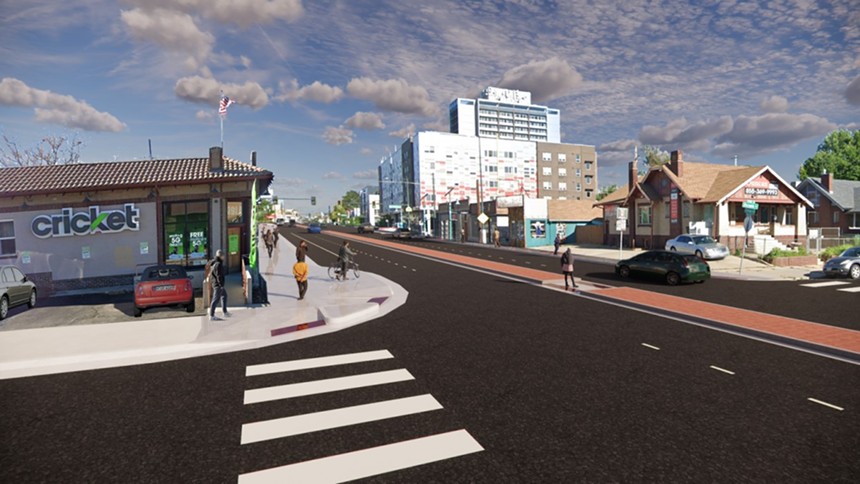
When residents saw their dream of raised medians with greenery had been reduced to nothing but flat concrete, they were devastated.
DOTI rendering
Heidi Newhart, an at-large member of the West Colfax Association of Neighbors board and chair of its mobility committee, has been working on the project for years. At the January CAG meeting, she points out, the community was told the project would be executed as planned.
“Then when we got on the call on February 1, they just told us they were $1.8 million down and these concrete medians were safety improvements and that's what they had to do and that's what they were going to do,” she recalls. “Green improvements, green infrastructure, those kinds of things are classically underfunded, so it’s not surprising.”
But it was disheartening. Community members had seen the budget for the 16th Street Mall construction project go from $149 million to $172.5 million in the last year — but the city couldn’t find $2 million more for West Colfax.
“It seems like in the tight budgeting situation that the city is in, they're taking their limited funds and continuing to give it to over-invested parts of the city instead of this part of the city that's been promised this one safety project for a decade,” says Jonathan Pira, co-chair of the DOTI Citizen Advisory Board and chairman of WeCAN’s land-use committee.
This wasn't a typical public comment situation where the city has to beg people to show up, Pira adds, or where citizens get angry after a project is completed when they had plenty of chances to weigh in earlier. This was an actively engaged community that was begging to be included in project updates.
“I don't want to burden the department with endless community meetings, because what we actually tend to find is we spend a ton of time and money building plans and affirming those plans, and then when projects actually come to be put together, there will be like seven rounds of additional community engagement, and in each one of those rounds, the project gets watered down further and further and further until it is unrecognizable,” Pira says. “But I definitely think that this was a miss.”
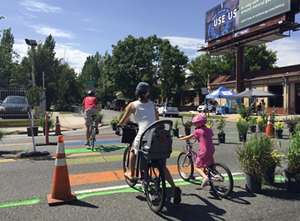
Nearly ten years ago, West Colfax residents envisioned a street with greenery and better pedestrian safety.
West Colfax Business Improvement District
“The raised medians were a traffic-calming feature that was going to make us safer,” says Newhart.
Residents were also worried that filling the space with flat concrete could discourage changes down the line if more funding became available, because it would be expensive to tear up concrete. As a temporary solution, they instead proposed keeping the raised medians and greenery at intersections but using paint and bollards between intersections so there would be flexibility.
“That's the kind of creative problem-solving that they could work through with the community rather than just moving ahead with nothing but concrete,” says Jill Locantore, executive director of the Denver Streets Partnership, which has been an advocate for this project since its inception.
The BID quickly surveyed over 250 people and found that 96 percent thought greenery was essential and 84 percent supported the interim "post and paint" solution.
So WeCAN and the BID mobilized to let Denver City Council, the mayor and DOTI leadership know that the changes were unacceptable and to ask for a better solution, including the one they’d suggested.
Council President Jamie Torres, who represents much of the project area, heard them loud and clear.
“The need for this not just to have transit and pedestrian safety infrastructure but green infrastructure was such an important part,” she says. “We've had some really painful and tragic losses of life along Colfax, and it's been just such a heavy lift to be able to get the city's transportation department and the state's transportation department in the same place for the same purpose, that it would have been probably another fifteen to twenty years before we were able to come back and put better improvements along this corridor.”
Torres and fellow councilmember Amanda Sandoval, whose district is also impacted by the project, brought the issue up in Torres’s weekly meeting with Mayor Mike Johnston on February 6. “We met with him because it was felt he probably didn't have any of the background about how we arrived there and why that was going to be such a damaging decision to make,” Torres says.
According to mayoral spokesperson Jordan Fuja, Johnston understands the importance of the project and pushed for a solution.
“He was a strong advocate,” she says. “Thanks to innovative financing options developed by the city's finance team, we're proud that the West Colfax pedestrian improvements will continue to move forward, reduce crashes and improve safety."
Kuhn says DOTI is still working out the exact funding strategy that will make it happen, but on February 22, community members learned that the project would go forward as originally planned.
“It means a lot for West Colfax to know that we can organize and advocate for good street design, as these wins are integral to building safer streets,” Newhart says.
Shah says he’s proud of the community for standing strong together.
“It's just a total joy,” Torres says of representing the West Colfax area. “Nobody can do this work alone, and they all really get and embrace that philosophy that every person can contribute something to their community.”

